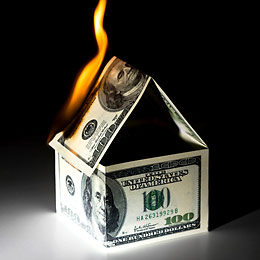
On June 27, 2012, Gary Gensler – head of a lesser known U.S. financial regulatory agency known as the Commodities Futures Trading Commission – made what will almost certainly go down as the most important announcement of his career. Investigators from the agency's Enforcement bureau had discovered reams of internal emails between traders at Britain's second largest bank, Barclay's, proving that for at least five years – from 2005 through 2009 – traders in the bank's swaps and derivatives units had been fudging submissions to the London interbank offered rate, also known as Libor – and it's European equivalent, Euribor – to increase the profitability of their trading positions.
The CFTC had been investigating Libor manipulation since 2008 and now it had its smoking gun. Barclays was fined more than $450 million for manipulating the rate – including the largest civil fine in CFTC history – and Gensler suddenly became a household name (at least in those homes occupied by business writers and financial regulatory officials).
In an interview with Time magazine at the beginning of July, Gensler offered a simple summary of the developing scandal.
“We need an honest system and this was one bank that was trying to do something dishonest,” he said.
But before long it became obvious that the CFTC had stumbled on to something much bigger. Since the Libor scandal first broke, it has widened to comprise as many as 20 banks, including Citigroup, J.P. Morgan Chase and Bank of America – the three American institutions on the Libor rate-setting panel. Investigations have been launched against traders at Deutsche Bank, HSBC Holdings, Societe Generale and Credit Agricole, and court documents released in September tell of a Libor rigging “cartel” inside Royal Bank of Scotland's Singapore office. (At press time RBS was in settlement talks with regulators, and the European Parliament was threatening jail time for traders found guilty of manipulating the rate).
Officials are now looking into allegations of inter-bank collusion to artificially set Libor numbers that threaten to ensnare officials at the Bank of England and may lead all the way to the Federal Reserve and the European Central Bank.
Analysts say that when the dust settles, the Libor scandal will wind up being “the biggest consumer fraud in history,” amounting to more than $100 billion in legal liabilities. But it isn't just consumers who are feeling the pain. Billions of dollars in commercial loans are at least tangentially tied to the rate; and in these cases the cost of the scandal will be difficult if not impossible to ever fully gauge.
The Rise of Libor
Libor has been called “the world's most important number” but before the 1990s almost no one had ever heard of it. The index began its life in 1986, under the auspices of the British Bankers' Association, and has since become the primary metric for trillions of dollars of variable-rate loans – ranging from mortgages to equipment leases. Each day a panel of 18 financial institutions submit estimates of the rate at which they could borrow funds on the London interbank market. Quotes are issued in 15 different maturities ranging from overnight to one year – with the most common maturities being 30, 60 and 90 days.